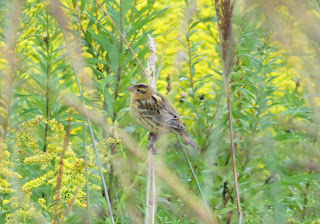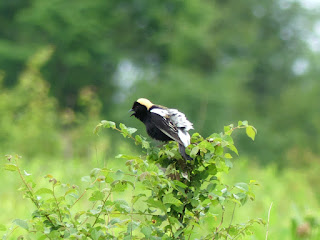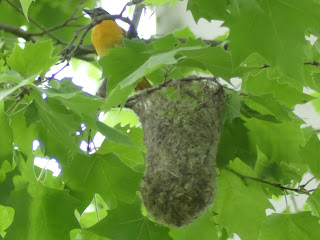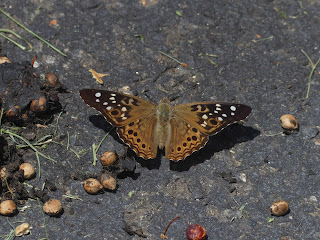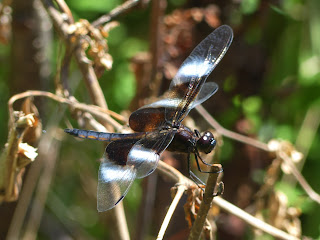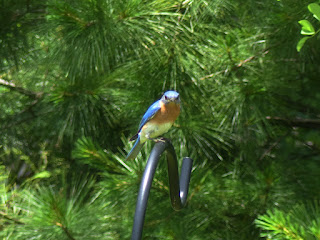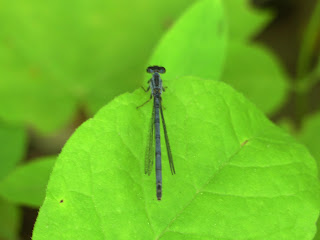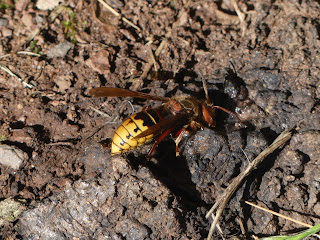Photobombing Dragonfly
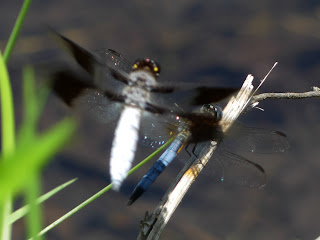
It looks like I was all lined up for an above average picture of a perching dragonfly when suddenly someone else jumped in front of the camera. You can see that the background dragonfly (probably a Blue Dasher ) was in focus but the intruder (definitely a Common Whitetail ) was a little too close. (The movement of being in flight probably also contributed to the blurriness.) These kinds of photobomb moments are pretty common for me, and are especially likely to happen: Among perched dragonflies, especially near water when males are trying to acquire/defend a territory. Among pollinators when a bunch of them are competing for the same flowers. At bird feeders when birds are both trying to feed themselves while depriving rival birds of an easy meal. A fair question is whether the Common Whitetail was attacking the Blue Dasher to get a meal. Dragonflies will eat other dragonflies, especially species smaller than themselves. And Blue Dashers are slightly smaller than Common Whitetails. But...







